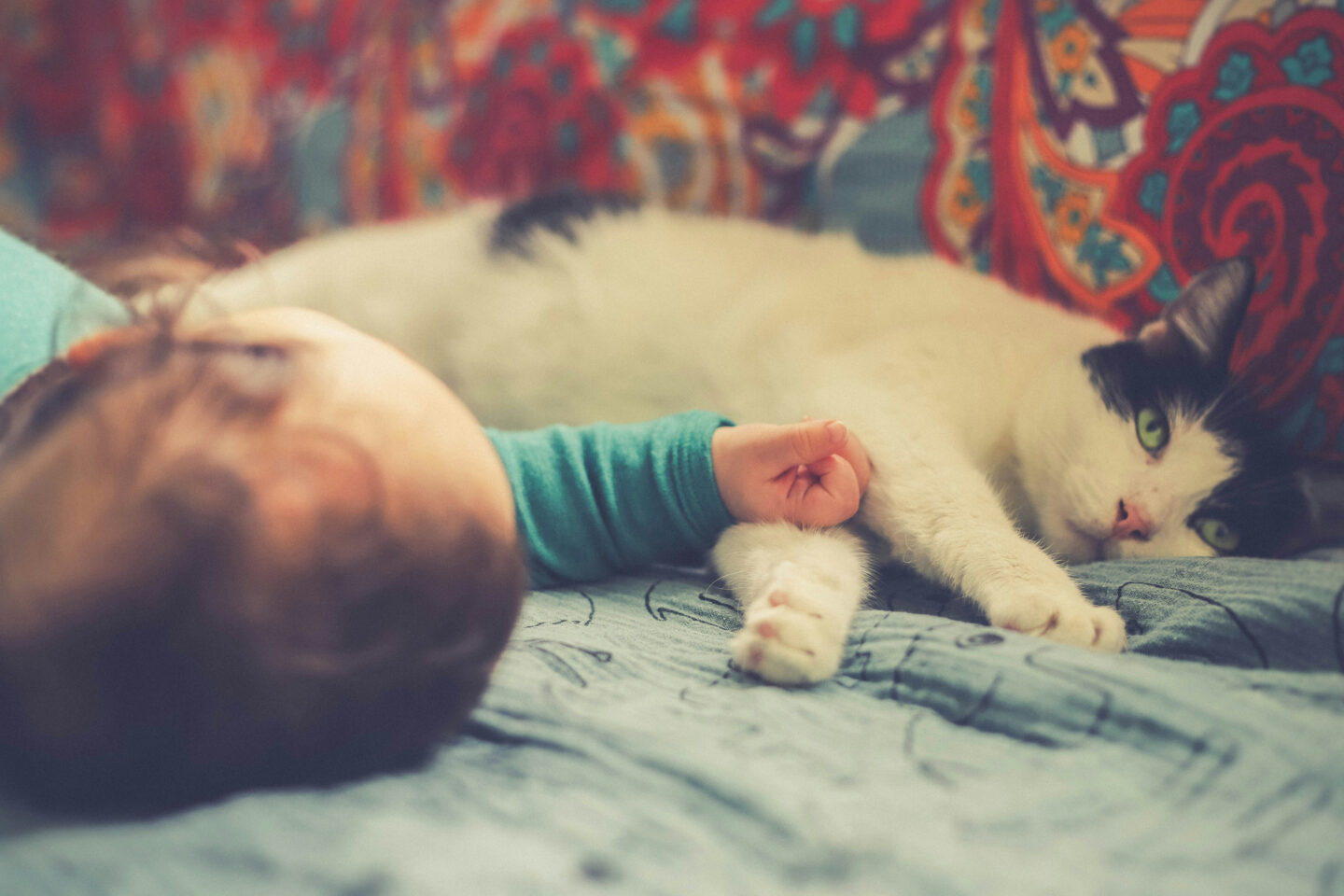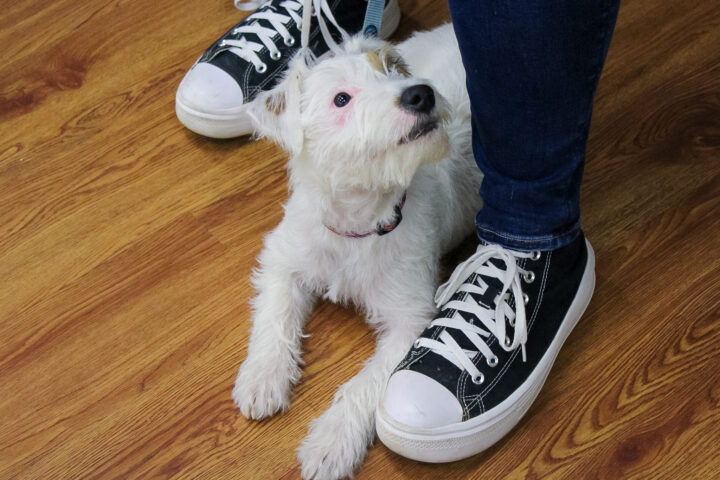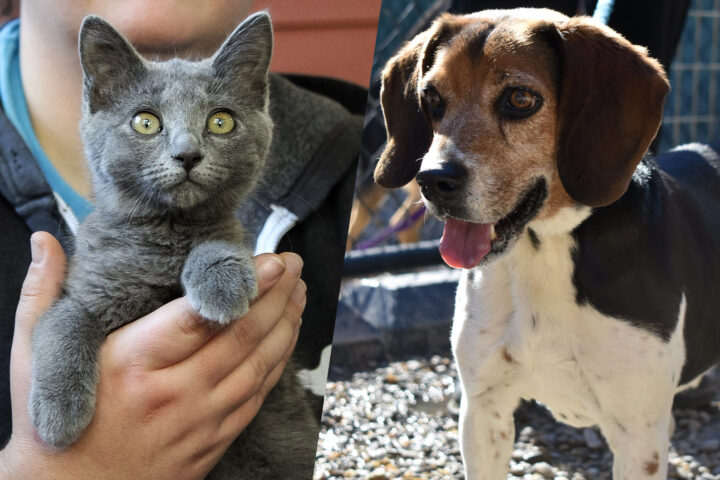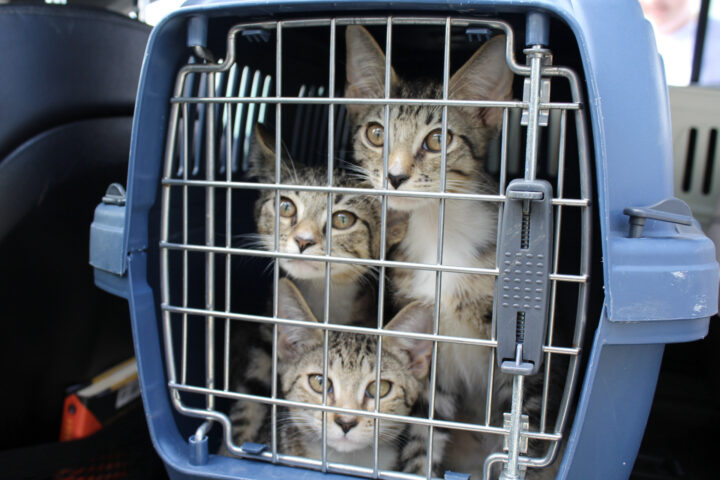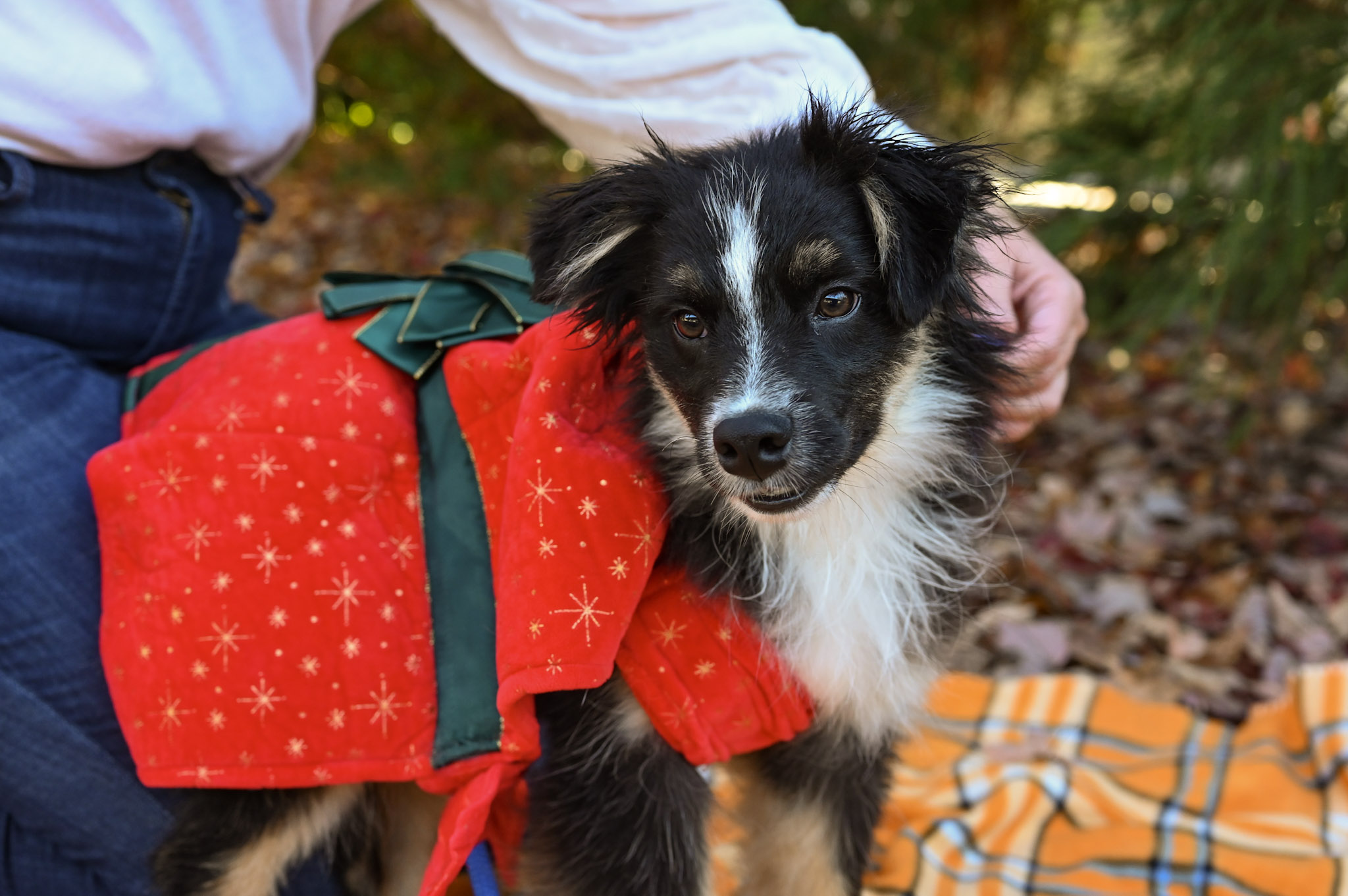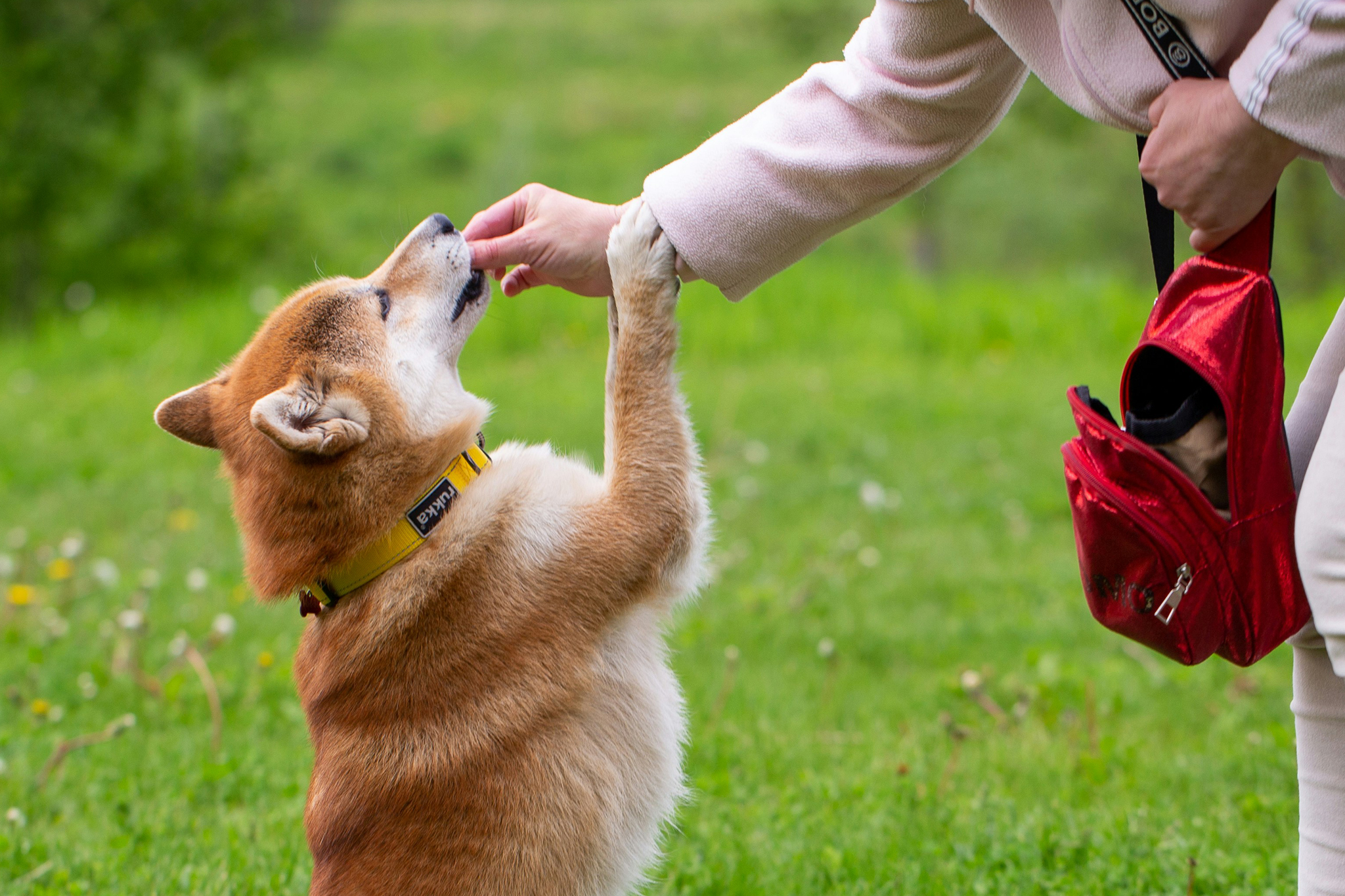Many people face a time in their lives when the size of their family will change with the addition of a baby or young child. A big concern is how their pet will react to a new human family member. The key is to start preparing your pets as early as possible, enforcing the behaviors you would like to see from your pet when around the child.
A puppy or kitten can be easier to train than an adult in some ways, since an infant animal will not have established behaviors and routines. If you have an adult pet, take the following into consideration:
- How much socialization has your pet received throughout his life with infants, toddlers, and young children?
- How does your pet react around children that come to visit or see them on walks?
- How much training have you done with your pet to ensure good house manners?
- Does your pet respond to you easily when asked to get off a piece of furniture or greet visitors politely?
- What are your pet’s daily routines, and will you be able to maintain them?
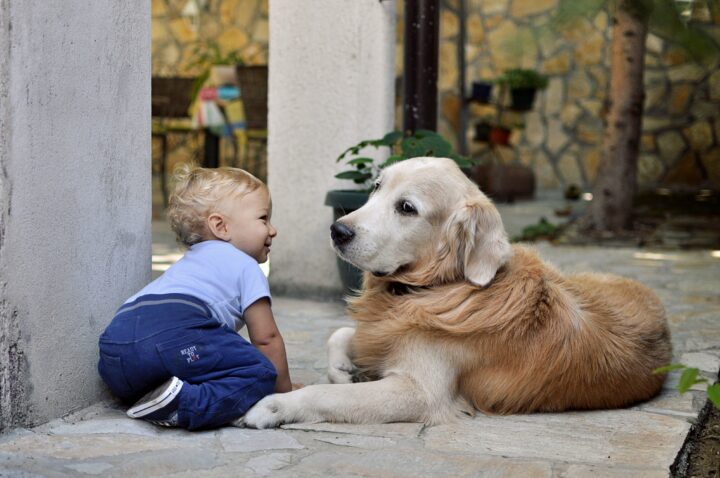
House rules matter!
Do not wait for your child to arrive to change the rules. Establishing rules months in advance will benefit you in the long run.
When indoors, calmness reigns
If you have multiple pets, avoid allowing them to roughhouse or wrestle throughout the house. They will not be paying attention to a child laying on a blanket or sitting in a swing or car seat. Your child could end up getting injured and frightened by the unruly experience.
Furniture access
You will spend a great deal of time sitting with an infant and may not want your pet crawling all over you during this time. If you allow your dog on the furniture, teaching your dog to settle next to you on a blanket during feeding time is extremely beneficial. You may want to redirect your snuggle time with your cat on certain pieces of furniture that are not used for feeding your infant. Both can quickly learn if you are consistent.
Kitchen table and counters
Kitchen manners are essential for all pets. Most nuisance behaviors occur in the kitchen since we spend a great deal of time there, and this is where food is kept and prepared. Discourage your cats from climbing on counters by setting up “booby traps.” Dogs should never be given food from the counters. Every time your pet jumps on the counter and gets a morsel of food, the behavior is reinforced. Reinforcement increases behaviors. Keep your counters clean and pet-free.
Your pet’s toys
Keep your pet’s toys in a box or specific room. When the child comes home, there will lots of new baby toys. Pets do not understand dog/cat toys vs. children’s toys. A teddy bear on the floor can be a great toy to shred.
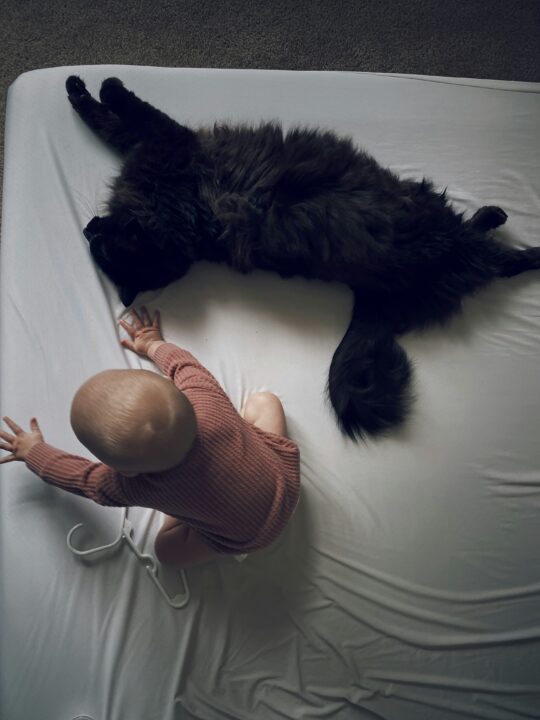
Getting ready for baby!
This can be a very hectic time for the whole family. Getting your pets ready in advance will make life easier in the long run. Here are a few tips:
- Bring a baby blanket home so the pets can sniff the baby’s scent.
- Practice sessions with a crying/crawling doll. Treat the doll as if it was the baby to acclimate pets to a baby in a blanket, cradle, car seat, swing.
- Prepare a baby playpen that are off-limits to pets. Dogs should practice down stays on the outside of the pen. Cats should not be permitted to jump into the pen. All rewards come outside of the pen.
- Pets like routine and if their routine is altered, they can be confused and upset. They are not jealous of the new baby. Try to stay with your routine as best as possible. Hiring a pet sitter may be in order if you have an active, young dog.
- The baby’s room should be off-limits to pets unless you are supervising them. To prevent your cat from attempting to sleep with your baby, put a hanging net over the cradle or crib so you can relax.
- Get your pet acclimated to a crate in your car or a seatbelt to restrict movement. Dogs running around the car can be dangerous for everyone involved.
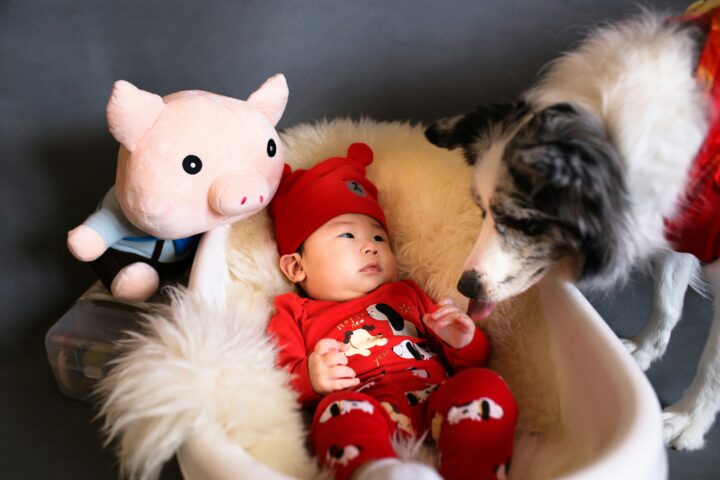
Baby comes home!
- Exercise and feed your pets before you arrive home so they are tired and their needs have been met.
- It is recommended that another adult carry the baby in so the parents can greet the pets as they typically do.
- Let your pet sniff the baby. If you are concerned about your pet reacting aggressively to the baby, please consult with a professional in the field months in advance of the baby coming home.
- Include the pets in as many activities with the baby or child as possible. Teach your dog to walk nicely on lead next to a baby carriage so he can join you on daily walks or jogs.
- Motorized swings should be off-limits to pets. From a dog’s or cat’s perspective, a swinging object with a giggling baby in it looks quite interesting. It is not their job to stop the movement or chase after it.
There is a fair amount of change that will happen in your life and that of your pet when a child enters the picture. Do your best to prepare your pet months in advance of the arrival of your child. It will make the transition go much more smoothly and life will be easier for everyone involved.
Additional education:
- Raising Puppies & Kids Together: A Guide for Parents by Pia Silvani
- Keeping Kids and Dogs Safe–From Each Other by Patricia McConnell
- Dogs and Babies via ASPCA
